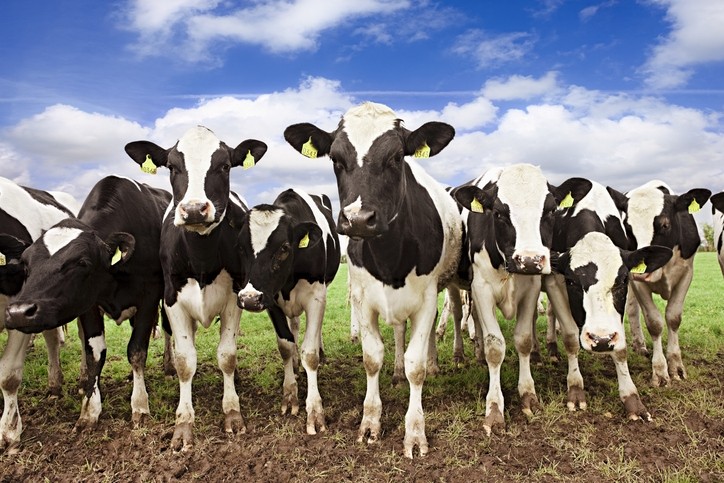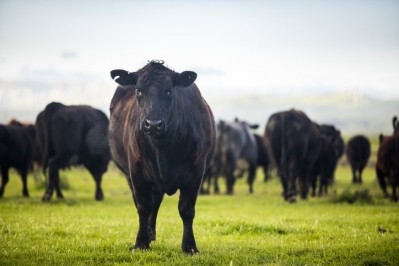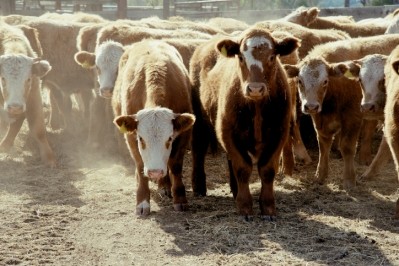Mootral looking to reduce methane intensity, improve health and productivity in dairy cows

“Only as recently as 2021, we still needed to educate people on methane emissions, we still needed to educate them on how cows could be useful in reducing such emissions and why that would be relevant in terms of having a positive impact on climate change. That is no longer necessary today, certainly not since COP26,” said Thomas Hafner, founder, and CEO of Mootral, a Swiss-British agri-tech company.
Methane reduction goals are now being set globally, with countries increasingly focused on finding the most efficient ways to reach those goals, he continued.
Methane is emitted from a variety of anthropogenic (human-influenced) and natural sources. Anthropogenic emission sources include landfills, oil and natural gas systems, agricultural activities, coal mining, stationary and mobile combustion, wastewater treatment, and certain industrial processes.
Enteric fermentation is the digestive process of animals that releases methane (CH4), a potent greenhouse gas (GHG), as a byproduct. Enteric fermentation accounts for as much as 30% of global CH4 emissions or about 40% of total global emissions from the agricultural sector. Cattle contribute most of the GHG emissions from enteric fermentation globally, followed by other ruminants such as buffalo, sheep, and goats.
Reducing livestock methane through dietary means is deemed to be an effective approach to lowering CH4 emissions, as is enhancing the conversion of dietary energy to meat or milk production without compromising the animal’s health.
Mootral Ruminant is the UK-based firm's original methane emissions reduction-focused product, and is based on a proprietary combination of garlic and citrus extracts. It is produced in a pellet format.
In terms of demonstrating a reduction of methane emissions in various kinds of dairy cows and in beef cattle on feed supplemented with its product, Mootral already has generated significant data in this regard. In Holstein cows in the UK, it reported reductions in methane emissions of 20%, and, in Jerseys, reductions of up to 38%; in certain beef species, it has noted reductions of up to 25%, and, in a calf trial in the Netherlands, it recorded cuts of around 24%.
The past few years has seen the developer heighten its focus on R&D work, with trials showing the product can also improve herd health and yield.
“Whilst the world is figuring out how to do this [methane emissions reduction], we have doubled down on product development, learning from market players how we can get [methane reduction products] deployed, but we also have been focusing on designing the next generation of products that can help the industry to get to their targets.”
Health benefits
Hafner said the original product, Mootral Ruminant, also improves the efficiency of milk production by supporting health.
“The product has a significant impact on health parameters such as mastitis and milk fever. That all combines into what we call [a method] to reduce enteric methane intensity. That is the amount of methane emitted per unit of product.”
And the higher productivity leads to greater feed efficiency, he said.
A trial undertaken in the UK showed its product can reduce mastitis occurrence in dairy cows, reported Hafner.
“If 25% of the UK dairy cows suffer from mastitis in any given lactation cycle and that is reduced, in the case of the trial we ran, by 18%, that is a meaningful decrease in terms of the economics, [the farmer has] more productive cows as animals don’t have to be taken offline.”
Mootral Ruminant consists of bioactive compounds from garlic and citrus flavonoids.
“Whilst they synergize on the direct methane reduction, they also synergize on improving fermentation, therefore less hydrogen is produced while more volatile fatty acids are generated, which the cow can use to produce milk. On the health side, the benefits of our bioactive compound in garlic are well documented, not just by us, but [in multiple studies], both in terms of immune health, and in regard to its antimicrobial properties. A few years ago, we did a study that showed a meaningful dose of this bioactive can suppress somatic cell count and therefore can suppress the [occurrence of] preclinical mastitis, if you catch it early enough.”
Milk yields
The company recently undertook a trial in the UK where it was able to demonstrate a 6% increase in energy corrected milk yield with Mootral Ruminant, according to Hafner.
“We have also done two studies in Chile, which we are in the process of publishing as a combined meta-analysis, where we have increased milk yield by a staggering 17% on average over the two studies. In this context, we are talking about lower producing animals that the ones we have in the UK. So, when we go to medium producing animals, which these cows in Chile would be classed as, we may have a bigger impact, and that is something we intend to focus on, as that again speaks to methane intensity, never mind how much methane we actually suppress from the [microbes known as] methanogens.”
So, it is a particularly useful product, he continued, for the developing world, where methane intensity is extremely high; animals there experience poor microbiome health and they, therefore, emit a lot of methane.
There remain knowledge gaps though around the mode of action in the case of increased milk yields arising from the use of the product.
“There are elements that we do not yet fully understand. What we do know is that Mootral Ruminant seems to have a positive effect on the fermentation process, and that it generates higher levels of volatile fatty acids, which the cow can use to produce more milk.”

Methane intensity claim
Mootral Ruminant is based on approved feed materials.
“So, it can be sold in just about every market in the world.
“In terms of making an actual methane reduction claim, that is something that countries regulate differently, and some markets, like the US, have never thought about it, but we're in the process of working with the regulatory agencies, as a stakeholder, to design an entirely new regulatory process, one that bridges the food and drug divide and also accounts for the high unmet urgent need that this category has, getting solutions to market.”
But, for now, the company is focusing on making a claim with the current product in relation to reducing methane intensity. “That is perfectly fine to make, as opposed to making a claim about the product being an intervention that reduces the population of methanogens, and, with that, drives lower methane emissions,” said Hafner.
There are multiple reasons why a claim around methane intensity reduction would be allowed but not one in relation to decreasing the population of methanogens, with the CEO citing causal factors as being interest groups, government bureaucracy, outdated regulation, and the whole issue of health claims versus disease claims.
“So, when we talk about improved methane intensity, that is a performance claim; whereas if you make a claim that the product is reducing methane directly, that means, by the nature of it, it is potentially a pharmacological intervention, and that then makes it a drug and you need to go through a different approval system.”
A claim on reducing methane intensity, however, works in all jurisdictions, he said, including Australia and New Zealand where Mootral has established a joint venture partner. “We are also in advanced discussions in countries such as China and India, and we are going through the registration process in Brazil.”
Ongoing product development
The fact that its original product delivers a “trifecta of benefits” has informed future product development strategy at the company, the CEO continued.
“Because what does it do? It reduces methane. That is important. It produces more milk, and that is important from an economic perspective, but also from an adoption perspective. Famers will choose a product that gives them other benefits alongside methane reduction, as long as it meets the criteria set by their customers. The product is great for the planet in terms of [reducing methane] intensity. And, on the health side, it may also help reduce the use of antibiotics, so again positive for production, and for the farmer.”
Mootral is now looking to enhance that original product further; additional modes of action based on the approved feed materials will be evaluated in trials next year.
The real future opportunity, said Hafner, lies in making massive impact, though, and, by that, he means enabling a methane reduction north of 50% at 60, 70, or even 80%.
Mootral has three distinct technologies in development in this regard.
“The goal is a triple action system, with one technology single-mindedly focused on reducing methane, one that interferes with the mode of action that produces methane in the rumen, the second module being a performance enhancer, and the third health [focused]. All these technologies already exist as patent pending solutions in Mootral’s labs, we are a biotech company at core.”
Hafner would not disclose the actual compounds being use in this triple action system, but he indicated nature identical, chemically synthesized molecules would likely come into play.
Carbon insets
But market adoption, globally, will come down to whether the value chain can agree on who is going to pay for incorporation of any methane emission-focused products into beef and dairy feeding systems.
“The one who should not be the payer is the farmer, they should be the beneficiary; we will certainly try to make sure of that. But, ultimately, the economics are sorted between the customer and the supplier.
“In terms of carbon credits, we, of course, were the first in the world to write a methodology, which is today the accepted global standard on which all methodologies, and variations, are based. And we were the first to launch carbon credits; we have sold them to players at high prices, which reflect the quality that they represent.
“Going forward, in our financial projections from 2026 onwards, when we have those anticipated larger reductions [in methane emissions], our product will be priced on a per ton of CO2 equivalent (tCO2e) reduction basis, which will be market driven. Therefore, it is companies that have cows in their supply chain that cannot meet their goals without addressing their Scope 3 emissions that will inset those credits.
"There will not be a massive marketplace for offsets, but there will be a massive amount of [carbon] insetting that will never leave the system.”








